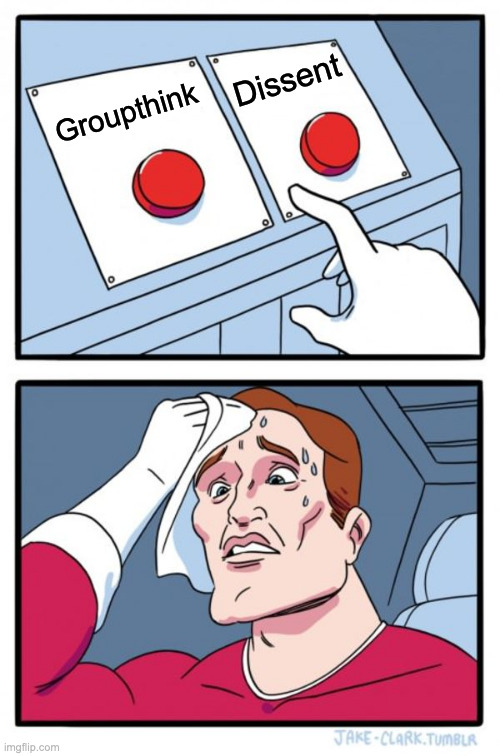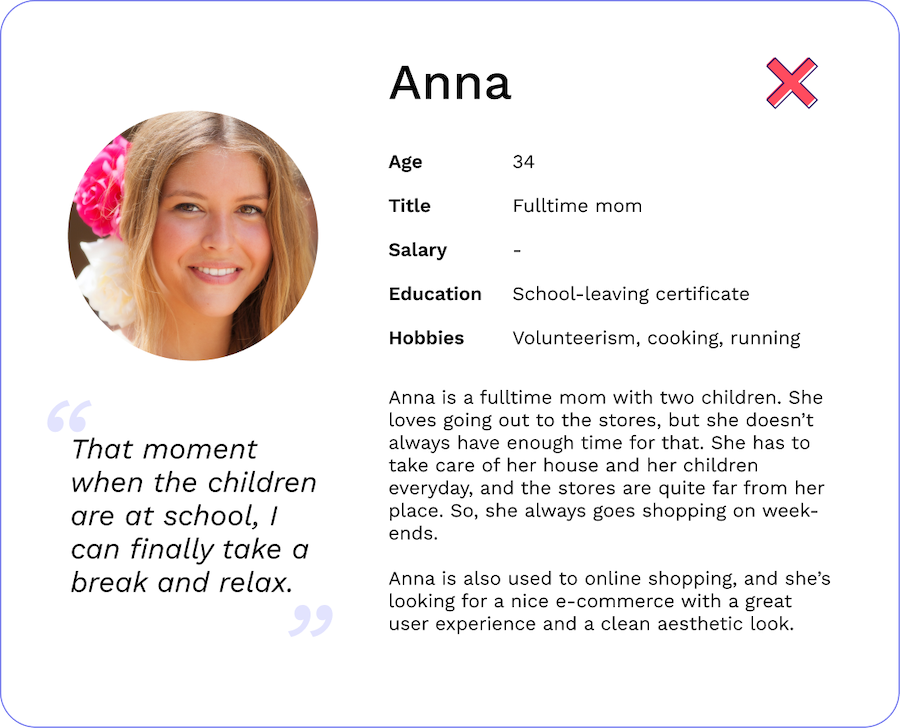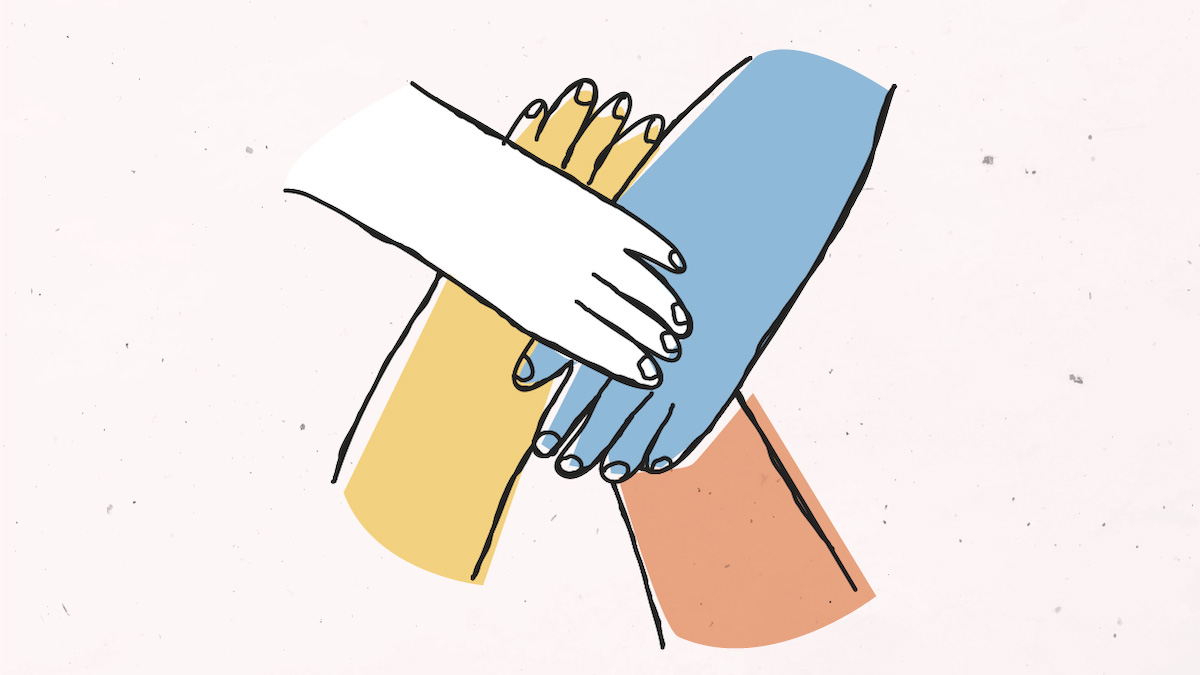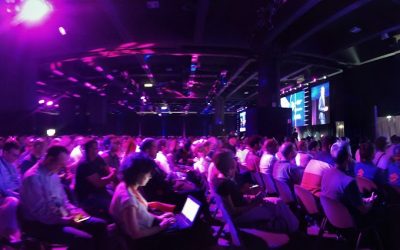Product design mainly requires deciding what your target market is.
Products are meant to be used by hundreds of thousands of people, but as a matter of fact, every product/user interaction is personal.
There is a tendency to consider people as a cohesive group with similar characteristics, or to take an average of the most extreme personality traits. But generalizations rarely match reality.
That is why, all those examples of usage that differ from the product standard, are just easily labeled as edge cases.
However, even speaking of ‘limit’ is a form of exclusion. Reality, actually, is not a group of equal individuals with a few exceptions here and there.
In fact, whoever will use the product you have designed is a complex human being with a complex life, who is at the mercy of mixed feelings that will inevitably affect his interaction with the product.
My job is to create a product that can be useful and user-friendly, but as designers can we really make our work become suitable for human beings?
Furthermore. What does designing for human beings mean?
A MATTER OF APPROACH
Design for Humanity means taking into account all forms of human diversity – considering skills, language, culture, gender, age and so on – to create products that suit the largest number of people.
This is the definition of inclusive. It is one of the main goals in User Experience design.
Having an inclusive approach in the design and realization phase, however, is neither an easy nor a forgone conclusion.
Let me make myself clear.
You will probably remember the controversy over the first speech recognition software that wasn’t able, or better, with great difficulty to identify female voices compared to male ones. Why is that? The answer is simple: the people who created them were mostly men who consequently used themselves as test subjects and trained the software with male voice data.
To give you some context, ‘sexist’ software was certainly not the outcome that was envisaged by those who conceived and realized it. Indeed, women’s exclusion was not intentional, yet it is the result.
When you focus too much on problem-solving, you zero in on goals by losing sight of the big picture, becoming ‘blind’ to problems that could arise and wreck the project itself.
As mentioned before, each product is conceived for a mass of people, even if, in the end, the interaction is strictly personal. No one teaches you how to deal with these interactions.
It is therefore important to maintain a global vision of what is being created, so as to distinguish recurring patterns and schemes and chose the most appropriate solutions to ensure inclusiveness.
This type of approach is the result of the ability to test the project vision. In this regard, there are some exercises that can be easily integrated into the design phase that can support an inclusive approach.
Let’s see them together.
THE DESIGNATED DISSENTER
The designated dissenter is an essential role – or rather it should be – in every project team. Bigger teams have more than one. The designated dissenter is a significant source of opposition. It is up to him to question choices, if necessary starting from the initial assumptions to the first drafts of the project, from wireframe to copy, form interactions to potential problems. He plays the role of the devil’s advocate, namely to ‘disagree’, putting to test the choices that have been made so far.
The objective is not to stand on other people’s work, but to move towards a greater humanity in project management preventing errors into which one could fall. The Designated Dissenter gives suggestions on how to perform tasks in the best conceivable way, and will always be looking for the winning alternative.
This role can be a valuable resource to identify the basic assumptions in a project – stated or not – and therefore understand what happens or could happen if the key requirements are not fulfilled.
Human beings have a natural tendency to conform to one another thoughts, after all we are made to seek harmony. Just as easily, in a group of smart individuals, one can lose his own point of view to conform to the group.
The Dissenter ensures that differing opinions are not forced to conform to the majority, allowing freedom of expression and independent self-expression. It might seem an easy task at first glance but it is not. In fact, the person who covers this role changes according to the project and each time the “Mr. No” buck passes to someone else. The “Designated Dissenter” is not a job title, but an important role that must be experienced at least once in one’s working life.

What questions should a Designated Dissenter ask himself?
Here are some examples:
Which user/features/site/etc are we taking for granted?
Which assumptions are we making?
What if these were wrong?
What if our assumptions were partially or totally wrong?
What would happen if we tried to subvert the assumptions?
What are the consequences of wrong assumptions?
In the event of an error, how can a damage be limited or repaired?
I purposely gave some very basic examples, because the key requirement is to constantly make questions, examine everything never takes things for granted. It is always a good practice to integrate these expedients in project teams, even if there is no designated person.
POST-MORTEM AND PRE-MORTEM
You may have attended a so-called project post-mortem, or you may have heard the definition before and it sounds familiar.
Post-mortem is when, at the end of the project, the team meets to evaluate the success or failure of a project, to learn from mistakes and consolidate best practices.
What would happen if the process were reversed? The post-mortem would turn into a pre-mortem to be carried out at the beginning of the project.
Pre-mortem is a planning exercise that reverses the format and it is integrated before or during the start of the project.
How does it work?
First of all, it is necessary to bring together all those involved in the project, namely, the team and the stakeholders.
During the meeting, the project plan is explained, so that everyone can align.
The chairman outlines a project failure scenario and asks the participants to list a number of reasons that may have caused such a serious situation.
For instance: ‘All registration procedures have been redefined on the e-commerce site, but signups have fallen by 50% in a month. Why?’
At this point, each attendee must react. Different strategies can be chosen. One can opt for brainstorming or a written reply can be individually provided. In the end, all answers are revealed to share similarities, differences and common points. Weaknesses are identified and addressed.
The utility of this exercise is to provide a space where concerns can be raised to increase awareness and overcome the reluctance to share.
Taking a positive outcome for granted is a common habit in project management and there is a widespread tendency to focus too much on expected results, forgetting the circumstances.
This type of approach, as mentioned above, leads to a ‘tunnel vision’, that can cause you to miss out on the countless reasons for a project failure.
Conducting a pre-mortem assessment can help this trend to be reversed and bring people to be more proactive. As the old saying goes:’ Prevention is better than cure ‘.
PERSONAS WITH FAULTS
Personas are one of the most used tools in User Experience design. These are fictional characters created to define the various product target markets.
Their description is usually based on interviews with real people, whose information is synthesized and aggregated to create archetypes. Personas can also be completely imaginary, if it is not possible to conduct interviews, such as when new products have no analogue.
Giving a real face to abstract data is cognitively stimulating and can allow to better meet user needs.
It often happens tough, that Personas are not realistic. Profile pictures are perfect smiling face stock images that end up showing an ‘ideal’ user rather than a real user.
So what to do then, to make Personas become more human?
A little advice. You can choose more realistic pictures, the ones that show other feelings rather than happiness like stress, distraction or simply neutral expression. Otherwise, photographs that portray the subject in daily activities.
Another small tip is to add some stress details to subject bios, to further stick to reality. These are all the trait-specific facets of a personality that cannot be summarized in a bulleted list of characteristics. Life is complex and intricate and the product might be used in far-from-ideal conditions.
You can take advantage of the ‘bulleted list of characteristics’ and expand it with details to remind that…whoever uses a product is not an abstract user, but a human being and therefore brings along unforeseen elements.
Let’s talk about Anne, mother of tho children. Anne shops online because she prefers to spend her time with her family and volunteering. In addition, Anne is going through a difficult financial period so she has the habit of saving money and always looks for the best deals when shopping.
All the above information can be useful to create a supermarket e-commerce site, and it is certainly more valuable than the generic data that are displayed in Personas concise descriptions.


Adding stress details to Personas bios allows for a greater understanding of how specific targets might behave and what is truly important to them.
Bringing Personas into the real world, made of everyday life and other concerns, can help to make more human design choices.
CONCLUSIONS
During this in-depth analysis, I have pointed out some small useful tricks for the creation of inclusive products.
The goal is not to change the construction process, but to craft your product vision gradually incorporating these expedients in everyday work, without disrupting well-established practices.
YOU MIGHT EVEN LIKE:
The Intranet and its feature: Designer POV



